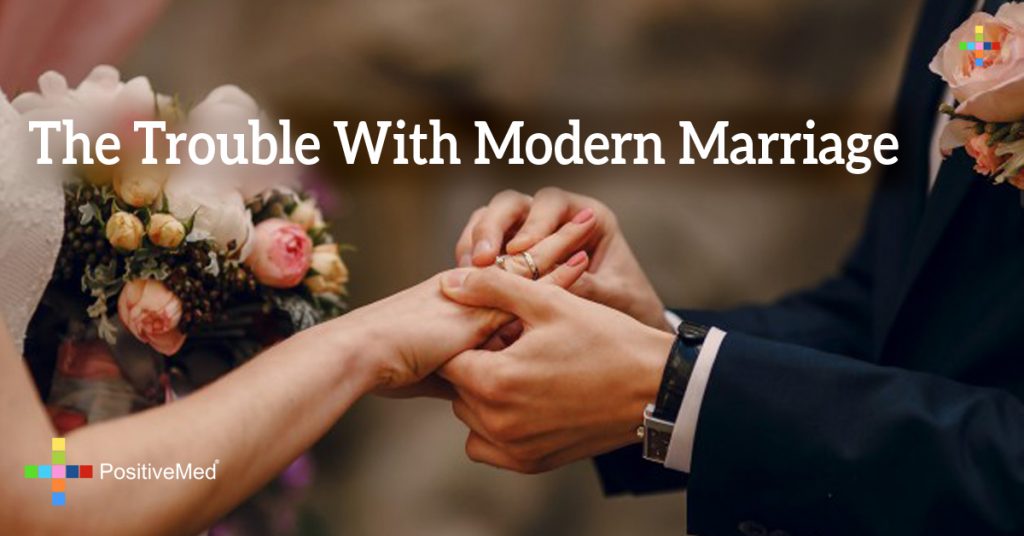
Erica B. Slotter, Ph.D.
Marriage in America is facing a variety of novel changes and challenges. I am not referring to the current legal battles regarding who is and is not allowed to marry, but rather the hurdles facing couples who do enter into marriage.
Over the past several decades, the nature of marriage has changed. Many people are choosing to live their lives with partners without getting legally married, and Americans are increasingly more approving of this option (Marquart et al., 2012).
Unfortunately, people who do marry have roughly a 50 percent chance of staying married. That’s equivalent to flipping a coin on your wedding day. Even for couples who stay married, many reports being unsatisfied in their relationships.

These emerging issues have led marital researchers to ask, “What gives?” What has changed about the nature of marriage since the 1970s that makes it less appealing to some, less satisfying to others, and generally less stable? Some researchers have blamed the ease with which we can get divorced, the general decline in Americans’ desire to marry, or the decline in respect for the institution, despite the fact that most Americans still express a desire to get married and remain optimistic about their chances for a happy union (Cherlin, 2009).
However, there is another potential explanation: Maybe we are simply expecting too much of our marriages without investing enough time and effort into our relationships to make these expectations achievable.
A recent article by Eli Finkel and colleagues (2014) reviewed how many of the changes that have taken place with regard to our expectations for marriage may actually set the stage for many marriages to fail, and for many remaining marriages to feel unsatisfying. Specifically, the researchers argue that throughout varied periods of our history, we expected our spouses to help satisfy our needs for resources (income, putting food on the table, etc.), safety and security, and our need to feel loved and cared for.
Modern marriage, or what the researchers call the “self-expressive” marriage, add to these existing expectations. We now expect that our spouses facilitate not only our needs for closeness and connection but also our needs for personal growth and fulfillment. Although we have become less reliant on our partners in some ways—for example, it is less common today, compared to previous decades, for couples to rely on only one partner to provide a livable income—we have become more reliant on our partners to meet our needs to feel self-esteem and self-actualization.
Our spouses are not only partners in the daily task of providing for and managing a household, but they are also expected to be our best friends, caring confidants, passionate and adventurous lovers, intellectual challenges, and biggest cheerleaders. These expectations are being placed more and more at our spouses’ feet, rather than spread across multiple relationships. For example, one study demonstrated that married individuals spend less time with friends and family members than their non-married counterparts (Gerstel & Sarkisian, 2006).
It seems that the expectations we place on our marriages are quite a burden for one person and one relationship to bear. Add to these demands the emerging findings, according to the review by Finkel and colleagues (2014), that Americans are investing less time and effort in the maintenance of their relationships than in previous decades, and it seems no wonder that so many are disappointed and unsatisfied in their marriages.
So what’s to be done?
The recent review by Finkel and colleagues suggests three possible remedies to the issue of high expectations:
– First, we can reduce the expectations of our marriages. For example, perhaps we can reconcile ourselves to the idea that friends or colleagues may better meet our needs for support and encouragement at work than our spouses.
– Second, we can invest more time and effort into our relationships by spending more quality time together (note the use of the word quality—spacing out in front of the bad television may not qualify).
– Third, we can learn to get the most “bang for our buck” by optimizing how we use the time and effort that we put into our relationships to help them meet our expectations. Relationship researchers have developed many low-cost activities and interventions designed to enhance marital quality, such as engaging in novel and exciting activities together or becoming more aware of our behavior in relationships (Coulter & Malouf, 2013, Rogge et al. 2014, both cf. Finkel et al., 2014). Interestingly, this last example works by having couples watch romantic movies and then discuss how they apply to their own relationship. Either option could be turned into a great date night …
Any way you look at it, marriage today is a tricky venture. In many ways, we seem to set ourselves up for disappointment and even divorce. The good news is that researchers are starting to understand the challenges facing modern marriage and to develop strategies to address these them. Of course, the specific challenges and solutions will vary from couple to couple and situation to situation, but this seems like a good place to start.
About The Author: Erica B. Slotter, Ph.D. is a social psychologist and assistant professor at Villanova University in Villanova, PA. Her research interests center around how our relationships shape who we are and how who we are shapes our relationships.
Erica B. Slotter, Ph.D. is a social psychologist and assistant professor at Villanova University in Villanova, PA. Her research interests center around how our relationships shape who we are and how who we are shapes our relationships.
Source: Psychology Today
Cherlin, A. J. (2009). The marriage-go-round: The state of marriage and the family in America today. New York, NY: Knopf.
Finkel, E.J, Hui, C.M., Carswell, K.L., & Larson, G.M. The suffocation of marriage: Climbing Mount Maslow without enough oxygen. Psychological Inquiry, 25, 1-41.
Gerstel, N., & Sarkisian, N. (2006). Marriage: The good, the bad, and the greedy. Contexts, 5, 16–2.
Marquardt, E., Blankenhorn, D., Lerman, R. I., Malone-Col´on, L.,& Wilcox, W. B. (2012). The president’s marriage agenda for the forgotten sixty percent. The state of our unions: Marriage in America. Charlottesville, VA: National Marriage Project and Institute for American Values.





